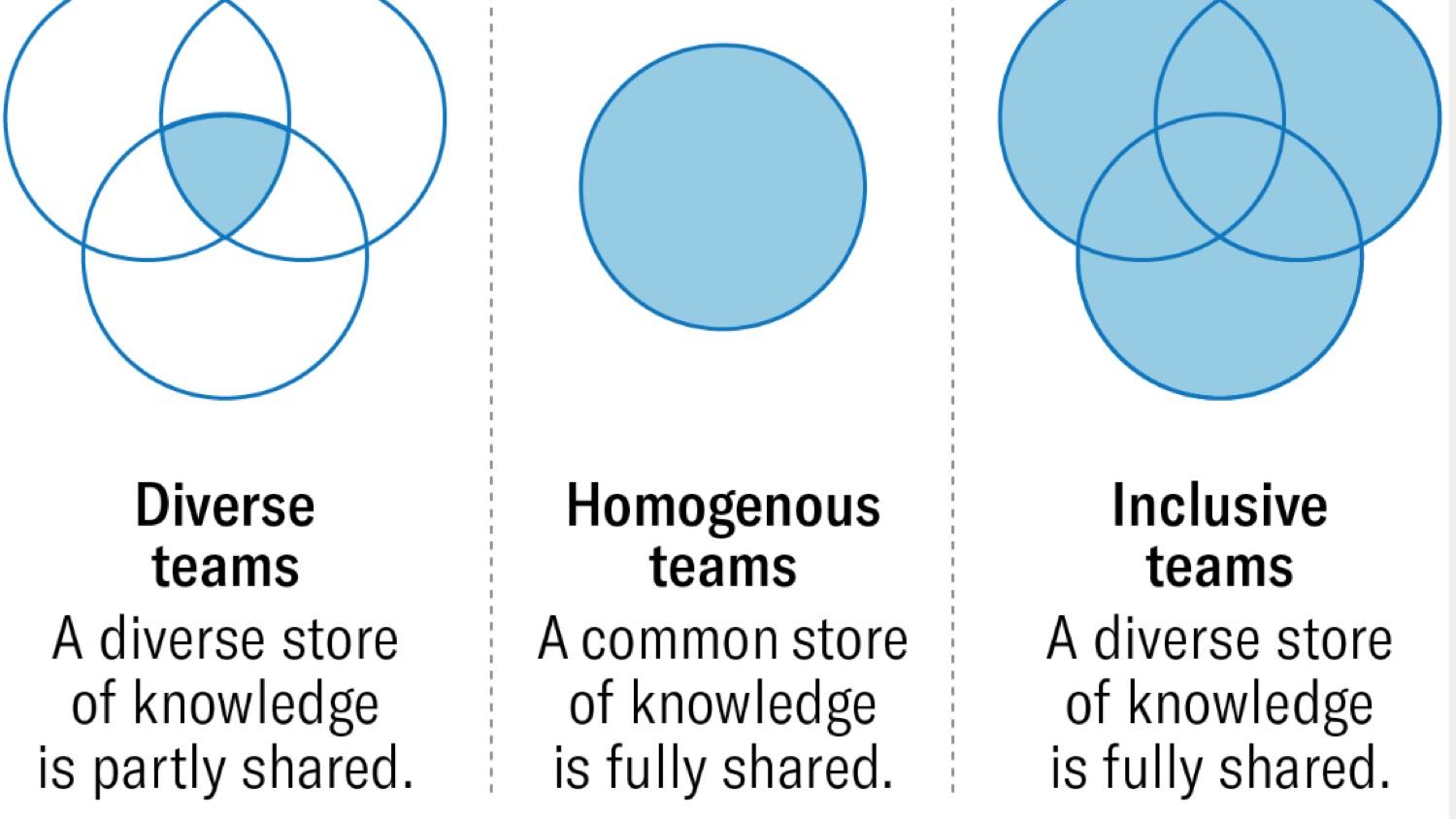Everything Starts with Trust
Curated from: hbr.org
Ideas, facts & insights covering these topics:
34 ideas
·26.4K reads
102
1
Explore the World's Best Ideas
Join today and uncover 100+ curated journeys from 50+ topics. Unlock access to our mobile app with extensive features.
Trust: The Inconspicuous Glue And Grease
We think of trust as precious, yet it’s the basis for almost everything we do as civilized people. Trust is the reason we’re willing to exchange our hard-earned paychecks for goods and services, pledge our lives to another person in marriage, cast a ballot for someone who will represent our interests. We rely on laws and contracts as safety nets, but even they are ultimately built on trust in the institutions that enforce them. We don’t know that justice will be served if something goes wrong, but we have enough faith in the system that we’re willing to make high-stakes deals with strangers.
304
3.29K reads
Trust: The Foundational Leader Capital
Trust is also one of the most essential forms of capital a leader has. Building trust, however, often requires thinking about leadership from a new perspective. The traditional leadership narrative is all about you: your vision and strategy; your ability to make the tough calls and rally the troops; your talents, your charisma, your heroic moments of courage and instinct. But leadership really isn’t about you. It’s about empowering other people as a result of your presence, and about making sure that the impact of your leadership continues into your absence.
302
2.09K reads
The Core Drivers Of Trust - The Trust Triangle
So how do you build up stores of this foundational leadership capital?
Trust has 3 core drivers: authenticity, logic, and empathy. People tend to trust you when they believe they are interacting with the real you (authenticity), when they have faith in your judgment and competence (logic), and when they feel that you care about them (empathy).
When trust is lost, it can almost always be traced back to a breakdown in one of these 3 drivers. To build (or rebuild) trust, you first need to figure out which driver you “wobble” on
352
2.05K reads
Why We Radiate Distrust
People don’t always realize how the information (or more often, the misinformation) that they’re broadcasting may undermine their own trustworthiness. What’s worse, stress tends to amplify the problem, causing people to double down on behaviors that make others skeptical. For example, they might unconsciously mask their true selves in a job interview, even though that’s precisely the type of less-than-fully-authentic behavior that reduces their chance of being hired.
284
1.69K reads
Our “Trust Wobble”
The good news is that most of us generate a stable pattern of trust signals, which means a small change in behavior can go a long way. In moments when trust is broken, or fails to get any real traction, it’s usually the same driver that has gone wobbly on us—authenticity, empathy, or logic. This driver is our “trust wobble.” In simple terms, it’s the driver that’s most likely to fail us.
287
1.45K reads
How To Identify Our Trust Wobble
To identify your wobble, think of a recent moment when you were not trusted as much as you wanted to be. Maybe you lost an important sale or didn’t get a stretch assignment. Maybe someone simply doubted your ability to execute. With that moment in mind, do something hard: Give the other person in your story the benefit of the doubt. Let’s call that person your “skeptic.” Assume that your skeptic’s reservations were valid and that you were the one responsible for the breakdown in trust. This exercise only works if you own it.
289
1.22K reads
Where Did Your Skeptic Found You Wanting?
If you had to choose from our three trust drivers, which would you say went wobbly on you in this situation?
Did your skeptic feel you were misrepresenting some part of yourself or your story? If so, that’s an authenticity problem.
Did your skeptic feel you might be putting your own interests first? If so, that’s an empathy problem.
Did your skeptic question the rigor of your analysis or your ability to execute on an ambitious plan? If so, that’s a logic problem.
296
1.03K reads
Our Trust Wobble Can Be Typical And/ Or Relative
Now stand back and try to look at your pattern of wobbles across multiple incidents. Pick three or four interactions that stand out to you, for whatever reason, and do a quick trust diagnostic for each one. What does your typical wobble seem to be? Does the pattern change under stress or with different kinds of stakeholders? For example, do you wobble on one trait with your direct reports but on a different one with people who have authority over you? That’s not uncommon.
280
859 reads
Bring At Least One Person Along For Your Diagnostic Ride
Ideally, someone who knows you well. Sharing your analysis can be clarifying—even liberating—and will help you test and refine your hypothesis. About 20% of self-assessments need a round of revision, so choose a partner who can keep you honest. Consider going back and testing your analysis directly by speaking openly about it with your skeptic. This conversation alone can be a powerful way to rebuild trust. When you take responsibility for a wobble, you reveal your humanity (authenticity) and analytic chops (logic) while communicating your commitment to the relationship (empathy).
285
728 reads
Overcoming Our Wobbles - Empathy
Most high-achieving leaders struggle with this one. Signaling a lack of empathy is a major barrier to empowerment leadership. If people think you care more about yourself than about others, they won’t trust you enough to lead them.
287
772 reads
When Empathy Becomes Collateral Damage Or Plain Roadkill
Empathy wobbles are common among people who are analytical and driven to learn. They often get impatient with those who aren’t similarly motivated or who take longer than they do to understand something. Additionally, the tools and experience of the modern workplace continually distract or prevent us from demonstrating empathy, by imposing 24-hour demands on our time and putting at our disposal all sorts of technologies that compete for our attention at any given moment.
284
686 reads
The Ills Of Empathy Wobblers
Empathy wobblers should pay close attention to their behavior in group settings, particularly when other people have the floor. Consider what often happens in a meeting: When it kicks off, most people feel very engaged. But as soon as empathy wobblers understand the concepts under discussion and have contributed their ideas, they lose interest. Their engagement plummets and remains low until the gathering comes to an end. Instead of paying attention, they often multitask, check their phones, engage in flamboyant displays of boredom—anything to make clear that this meeting is beneath them.
280
600 reads
The Prescription For Empathy Wobblers
There’s a basic solution to this problem. Instead of focusing on what you need in that meeting, work to ensure that everyone else gets what they need. Take radical responsibility for the others in the room. Share the burden of moving the dialogue forward, even if it’s not your meeting. Search for the resonant examples that will bring the concepts to life, and don’t disengage until everyone else in the room understands. This is almost impossible to do if texting or checking email is an option, so put away your devices. Everyone knows you’re not taking notes on their good ideas.
285
564 reads
Put Your Damn Phone Away
Indeed, the last thing to say on empathy is this: If you do nothing else to change your behavior, put away your phone more frequently. Put it truly away, out of sight and out of reach, not just flipped over for a few minutes at a time. You’ll be amazed at the change in the quality of your interactions and your ability to build trust.
284
619 reads
Overcoming Our Wobbles - Logic
If people don’t always have confidence in the rigor of your ideas, or if they don’t have full faith in your ability to deliver on them, then logic is probably your wobble. If they don’t trust your judgment, why would they want you at the wheel?
285
588 reads
The Prescription For Logic Wobblers
When logic is the problem, go back to the data. Root the case you’re making in sound evidence, speak about the things you know to be true beyond a reasonable doubt, and then—this is the hard part—stop there. One reason Larry Bird was such an extraordinary basketball player was that he only took shots he knew he could reliably make. That choice made him different from other great players who let ego and adrenaline cloud their shooting judgment. Bird studied and practiced so relentlessly that by the time the ball left his hands in the heat of competition, he knew exactly where it was going.
280
506 reads
Once you get comfortable with how that feels, start expanding what you know. Along the way, make an effort to learn from other people. Their insight is among your most valuable resources, but to access it, you must be willing to reveal that you don’t have all the answers—something leaders often resist. Engaging people about their experience has the additional benefit of communicating who you are and what energizes you professionally—an authenticity boost.
280
473 reads
Power Does Not Guarantee Permeation
For most logic wobblers, however, rigor isn’t the issue. Much of the time, the problem is the perception of wobbly logic rather than the reality of it. Why does this happen?
Because they’re not communicating their ideas effectively.
278
516 reads
The Long Way To Communicate Logic - Ending With The Point
There are generally two ways to communicate complex thoughts. The first takes your audience on a journey, with twists and turns and context and dramatic tension, until they eventually get to the payoff. Many of the world’s best storytellers use this technique. You can visualize this approach by imagining an inverted triangle. The journeying storyteller starts at the top, at the inverted base of the triangle, and traces an enchantingly meandering route down to its point.
282
459 reads
The Long Way Is, Well, Long
If logic is your wobble, however, that’s a risky path to take. With all that circuitous journeying, you’re likely to lose your audience along the way rather than build trust in your judgment. Listeners may even abandon you at one of your narrative turns.
280
450 reads
The Short Way To Communicate Logic - Starting With The Point
To avoid that, try flipping the imaginary triangle upright. Start with your main point, or headline, at the top of the triangle, and then work your way down, building a base of reinforcing evidence. This approach signals a clarity of vision and a full command of the facts. Everyone has a much better chance of following your logic. Even if you get interrupted along the way, you’ll at least have had a chance to communicate your key idea.
287
433 reads
Overcoming Our Wobbles - Authenticity
If people feel they’re not getting access to the “real” you—to a full and complete accounting of what you know, think, and feel—then you probably have an authenticity wobble.
A quick test: How different is your professional persona from the one that shows up around family and friends? If there’s a sharp difference, what are you getting in return for masking or minimizing certain parts of yourself? What’s the payoff?
282
417 reads
Why Do We Radiate Inauthenticity?
Being your “real self” sounds nice in theory, but there can be powerful reasons for holding back certain truths. The calculation can be highly practical at times, if wrenching—as in deciding to stay closeted in a workplace that’s hostile to queer identities. There may also be times when expressing your authentic feelings may risk harmful consequences: Women, for example, are disproportionately penalized for displaying negative emotions in the workplace, and black men are burdened by the false stereotype that they are predisposed to anger.
278
410 reads
Short-Sighted Self-Limiting For Short-Term Gains
Although withholding your true self may sometimes help you solve problems in the short term, it puts an artificial cap on trust and, by extension, on your ability to lead. When people sense that you’re concealing the truth or being less than authentic, they’re far less willing to make themselves vulnerable to you in the ways that leadership demands.
279
413 reads
The Cost Of Inauthenticity
The cost of inauthenticity can be observed up close in the performance of diverse teams. Diversity can be a tremendous asset in today’s marketplace, and the companies that get it right often enjoy powerful competitive tailwinds. But this advantage isn’t automatic. Simply populating your team with diverse perspectives and experiences doesn’t always translate into better performance.
278
397 reads
HomogeneityDiversity, Authenticity And Trust
In fact, the uncomfortable truth is that diverse teams can underperform homogenous teams if they’re not managed actively for differences among members. That’s because shared knowledge is key in decision-making, and diverse teams, by definition, start out with less of it. But if you create conditions of trust that allow diverse team members to bring their unique perspectives and experiences to the table, you can expand the amount of knowledge your team can access—and create an unbeatable advantage.
280
385 reads
The “Common Information Effect”
That is due in part to a phenomenon called the “common information effect”, which works like this: As human beings, we tend to focus on the things we have in common with other people. We tend to seek out and affirm our shared knowledge, because it confirms our value and kinship with the group. Diverse teams, by definition, have less common information readily available to them to use in collective decision-making.
280
370 reads
The Obvious Lead Of Homogeneity Over Diversity
Consider two teams of three people, one in which the three members are different from one another, and the other in which they’re similar. If both teams are managed in exactly the same way—if they simply follow the same best practices in group facilitation, for example—the homogenous team is likely to perform better. No amount of feedback or number of trust falls can overcome the strength of the common information effect.
278
369 reads
Open And Closed Lakes
But the “common information effect” only holds if people wobble on authenticity. When they choose to bring their unique selves to the table—that is, the parts of themselves that are different from other people—they can create an unbeatable advantage by expanding the amount of information the team can access. The result is an inclusive team that’s likely to outperform (by a long shot) both homogenous teams and diverse teams that aren’t actively managed for inclusion.
284
389 reads
No Wobble Is Too Innocent Or Too Far Away
Here’s the reason to care, even if you don’t see yourself as different: All of us pay the price of inauthentic interactions, and all of us have a better chance of thriving in inclusive environments where authenticity can flourish. Gender bias, in other words, is not just a woman’s problem. Systemic racism is not just an African-American or Latinx problem. It’s our shared moral and organizational imperative to create workplaces where the burdens of being different are shouldered by all of us. After all, we will all benefit wildly from eliminating them.
279
341 reads
Forge Links And Chains Of Authenticities
So pay less attention to what you think people want to hear and more attention to what you need to say to them. Reveal your full humanity to the world, regardless of what your critics say. And while you’re at it, take exquisite care of people who are different from you, confident in the knowledge that their difference is the very thing that could unleash your potential and your organization’s.
281
347 reads
In Myself I Trust
To be a truly empowering leader, you need to take stock of where you wobble not only in your relationships with others but also in your relationship with yourself. Are you being honest with yourself about your ambitions, or are you ignoring what really excites and inspires you? If l so, you’ve got an authenticity problem you need to address. Do you acknowledge your own needs and attend properly to them? If not, you’ve got to adopt a more empathetic posture toward yourself. Do you lack conviction in your own ideas and ability to perform? If so, you’ve got some logic issues to work out.
286
388 reads
IDEAS CURATED BY
CURATOR'S NOTE
When trust is lost, it can almost always be traced back to a breakdown in one of its 3 core drivers. To build (or rebuild) trust, we first need to figure out which driver we “wobble” on. (Replace the words “leaders” and “leadership” with “human beings” and “relationships” and see what happens).
“
Xarikleia 's ideas are part of this journey:
Learn more about personaldevelopment with this collection
How to start a successful business
How to build a strong team
How to market your business
Related collections
Similar ideas
3 ideas
What's Authentic Leadership & How Do You Practice It
blog.hubspot.com
9 ideas
How Leaders Build Trust | Harvard Business Publishing
harvardbusiness.org
Read & Learn
20x Faster
without
deepstash
with
deepstash
with
deepstash
Personalized microlearning
—
100+ Learning Journeys
—
Access to 200,000+ ideas
—
Access to the mobile app
—
Unlimited idea saving
—
—
Unlimited history
—
—
Unlimited listening to ideas
—
—
Downloading & offline access
—
—
Supercharge your mind with one idea per day
Enter your email and spend 1 minute every day to learn something new.
I agree to receive email updates




